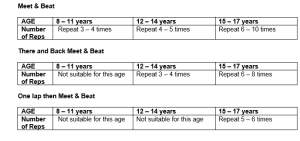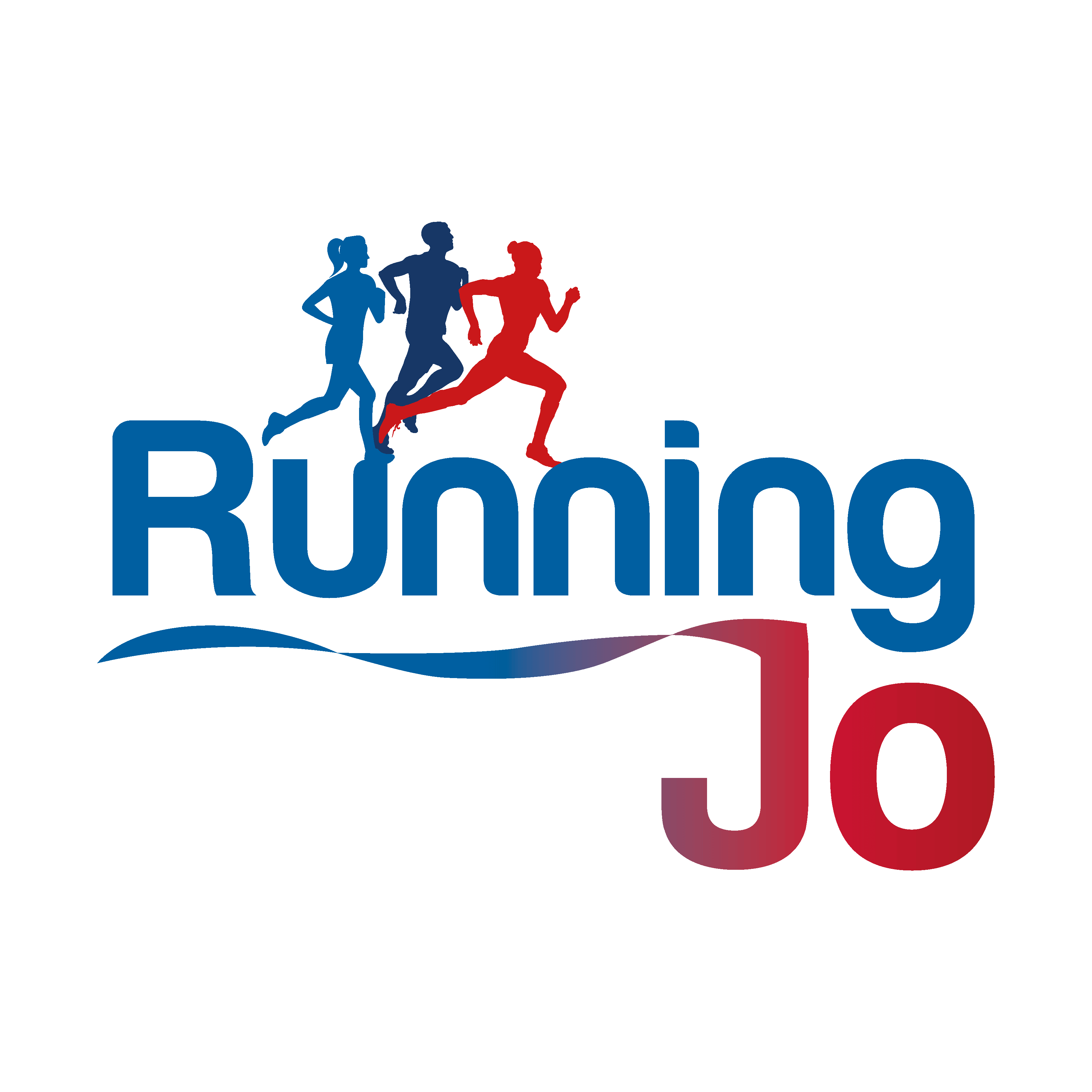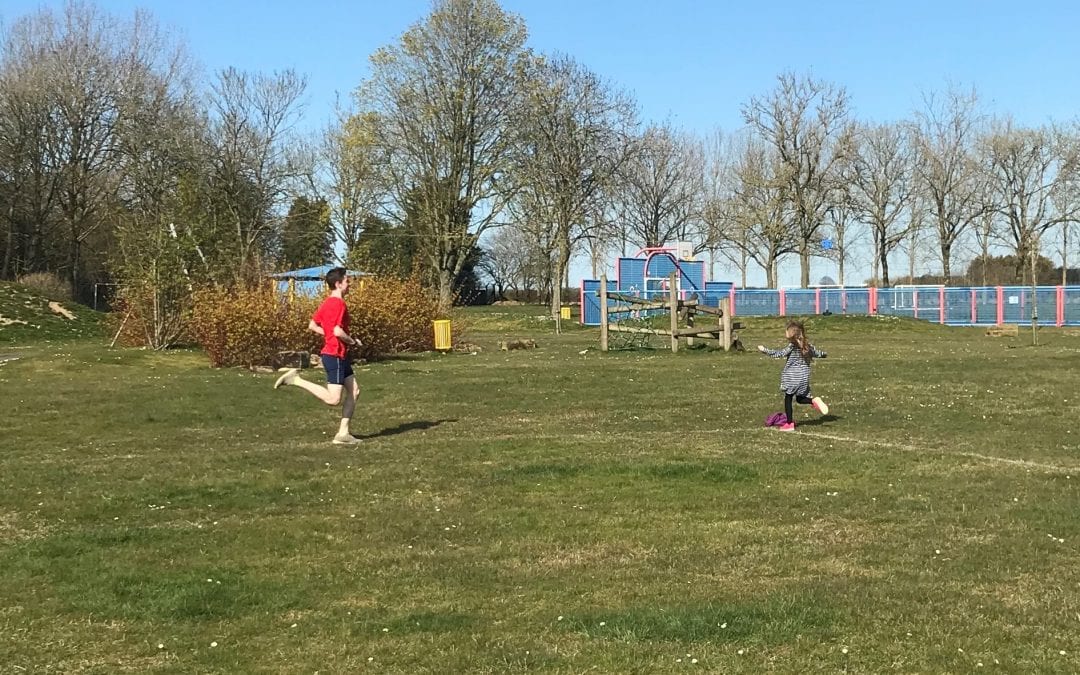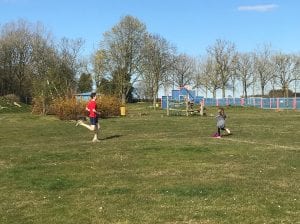Welcome to my lockdown Family Running Session!
Trying to juggle your own running, taking the kids out for fresh air and exercise, and complying with the once-a-day exercise rule?
You want to be a good, selfless parent. But you are still a runner, and human being, at heart. Running is important for your wellbeing too.
I have been coaching mixed-ability group sessions for some time. With some careful thought and planning many of these sessions can be adapted to suit families. This family running session is structured so that everyone does the right amount of running for them – fast or slow, young or old. This will be the first of many.
What’s more each family running session will be tried and tested by the us first – Me, the husband, the big child and the small child.
The Warm Up
Every session must start with a warm up. This is a simple, short but effective warm up for all ages.
If you would like to add some additional volume to your running session then you can start by jogging some additional laps of the pitch but this is not appropriate for young children.
Jog for 30 seconds
10 x Single Arm circles – forwards and backwards each arm
10 x Double arm circles – forwards and backwards
Jog for 30 seconds
Leg swings x 10 forwards and backwards each leg
Leg swings x 10 across each leg
Jog for 30 seconds
10 x bounces (two-footed mini jumps on balls of your feet)
10 x hops each leg
Jog for 30 seconds
10 x star jumps
Jog for 30 seconds
10 seconds pitter patter steps on the spot (small jogging steps on the spot)
10 seconds fast feet (small steps on the spot as fast as you can)
Jog 30 seconds
2 x 10ms walking on your toes
2 x 10ms walking on your heels
2 x 10ms high knee raises
2 x 10ms back kicks
Meet & Beat
This is a fun, competitive session in which the youngest can compete against the oldest and the fastest against the slowest. What’s more everyone still gets a really good training session.
How does it work?
Pair up the slowest with the fastest. If you have an odd number in your family then pair up the fastest person with the two slowest.
How much space do you need?
Ideally a football or cricket pitch or round the block (as long as your children are old enough to run safely or there is an adult to supervise and run with each child).
This session will also work using a smaller area or even your garden if that’s all you have available.
The session
1. Designate one corner of the pitch as the start. Both partners start here.
2. Meet
On “Go” both partners set off at the same time and run as fast as they can in opposite directions around the pitch.
3. Run as fast as you can until you meet your partner coming in the opposite direction. Stop where you meet each other.
(Note take care not to run into each other and cause injury from the collision).
4. Recovery
Rest for 90 seconds – 2 minutes or when everyone is ready to run again.
5. In preparation for the next rep each partner turns around to face back the way they came.
6. Beat
On “Go” each partner runs back to the start as fast as they can in the opposite direction to which they have just run.
7. Stop when you get back to the starting point.
8. The aim is run as fast as you can to beat your partner back to the start.
9. Recovery
Rest for 2 – 3 minutes or when everyone is ready to run again
10. Repeat.
Why does it work?
The session works well for mixed abilities as each runner runs for the same amount of time but the faster runners cover more distance.
Faster and slower runners can compete fairly against each other to run back as hard as they can because they are not covering the same distance. The faster runners won’t always win.
Variations
There are a number of variations to the session to increase the length of each rep if appropriate.
There and Back Meet & Beat
Run there and back for each run before you take a rest. So on “go” run as fast as you can until you meet your partner running in the opposite direction. Without stopping turn around straight away and run back as fast as you can. Rest for 3 – 4 minutes then repeat.
One lap then Meet & Beat
Both runners set off at the same time as above The fastest runner must run one whole lap and stop when they meet their partner on the second lap. Note the slower runner may not necessarily complete one whole lap. Rest for 90 seconds – 2 minutes. Then as above turn around. Run as fast as you can in the opposite direction back to the start (Don’t forget you need to run back including the additional lap too). Rest for 3 – 4 minutes then repeat.
Suitable numbers of reps.
The appropriate number of reps depend on the age of your children, their developmental stage, their fitness and the size of the pitch or field.
Remember the Golden Rules. Do not make your children do more than they want to do.
These recommendations are based on a standard football pitch (approx. 400ms)
The Golden Rules
As a fully qualified, licensed and insured British Athletics Coach there are some golden rules to follow to ensure the running sessions are appropriate for young athletes.
1. The sessions are suitable for all ages from 8 years upwards.
These sessions are specifically designed for children aged 8 and upwards. If you may choose to some adaptations for younger children you must ensure you follow the golden rules below even more closely.
2. Running should be fun.
Running with children should be fun
Some of the sessions have a competitive element but the overriding principle is enjoyment. Show your children that competition can be fun – even if you don’t win.
3. Don’t make your children do more than they want to do.
If your children want to stop, let them stop. If you think they are unlikely to finish the whole session, then plan ahead. Take a ball, some books, drawing or even an electronic device to keep them entertained when they’ve had enough of running. Then you can carry on.
4. Make sure you always warm up.
Warming up is essential before any strenuous exercise to minimise injury for both children and adults. Everyone who does the session must do the warm up.
5. No more than one or two running sessions each week for children.
Children should engage in a variety of running, jumping, throwing and multi-sport activities rather than specialise in any one sport or discipline until they have reached puberty. Even if you think they are destined to become Olympic Champions!
6. Children are not just mini-adults.
Children have different physiology to adults. What is suitable for adults is not always suitable for children. For example, children are less able to utilise their lactate energy system so may need more recovery than adults. Children should not run as far or as often as adults. The growth plates in their bones are susceptible to damage from too much impact from running which may have long lasting effects on their growth and development.
7. If something hurts then STOP.
You can minimise injury by warming up effectively and not running when you are tired, unwell or already injured. If something starts to hurt during the running session then stop immediately. Follow the principles of rest, ice, compression and elevation (RICE) and seek medical advice if appropriate.
8. Seek medical advice first.
If you or any members of your family have any underlying health condition then seek medical advice before engaging in strenuous activity.


